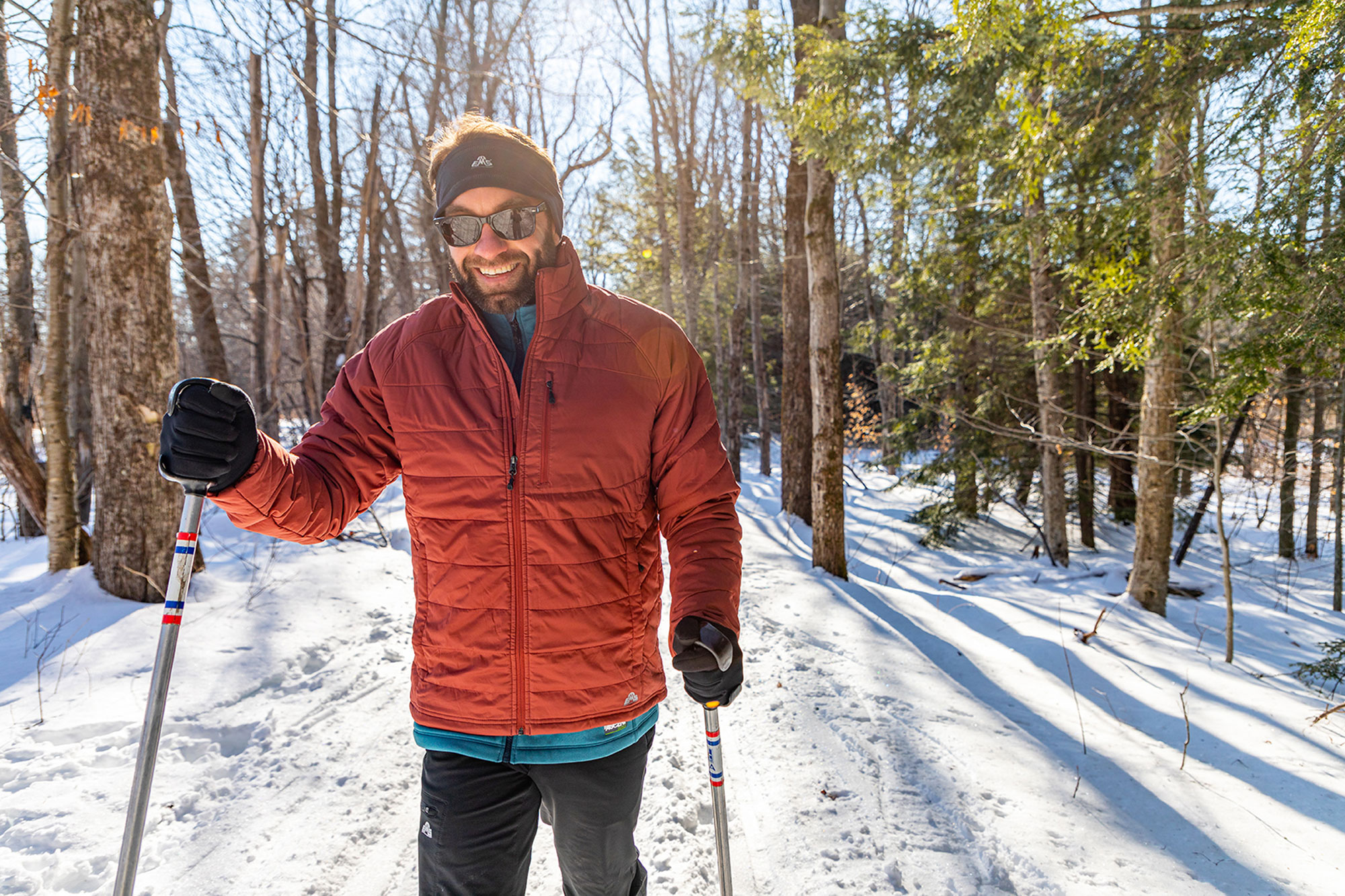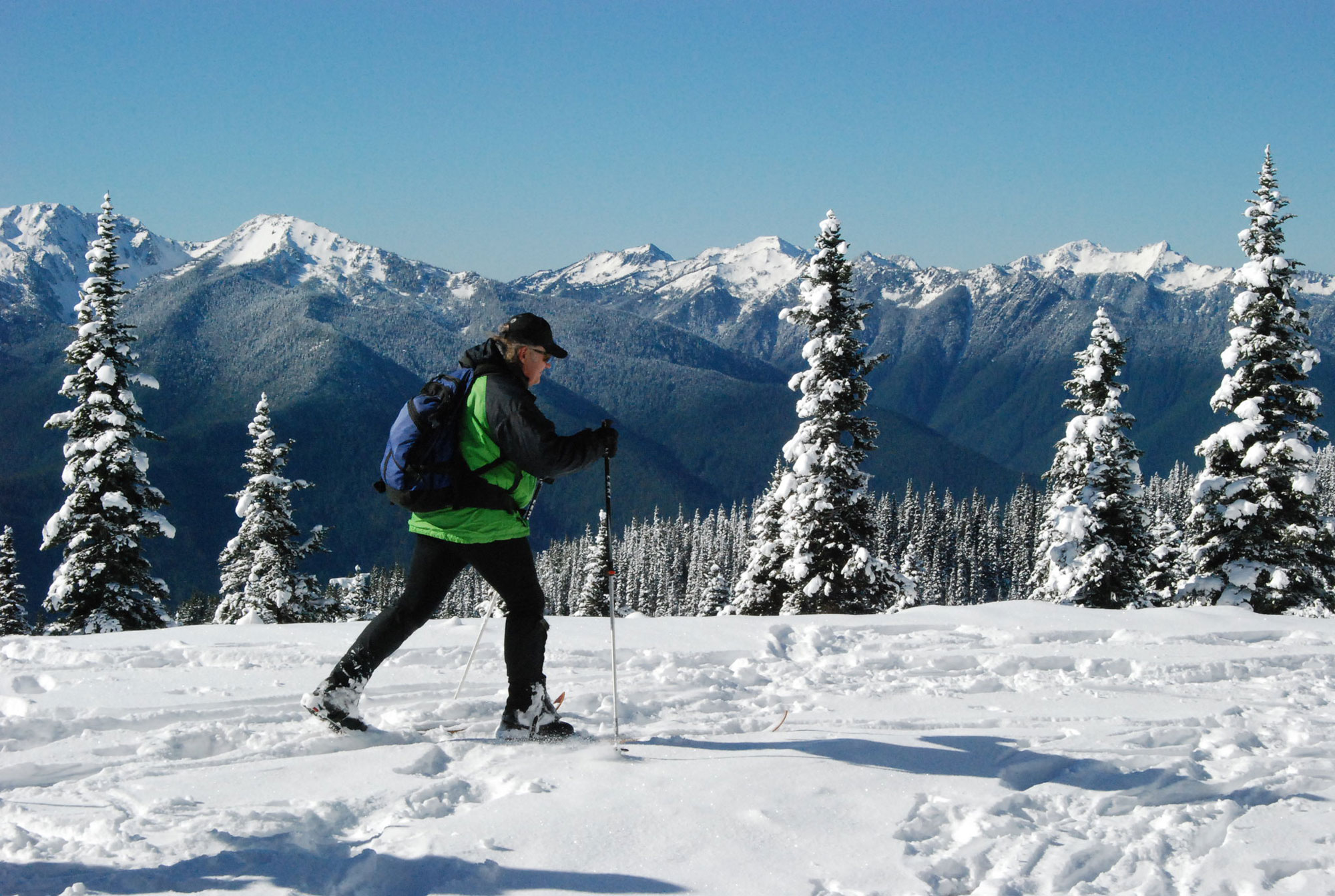Can you say you’re a skier if you limit yourself to one discipline within the sport? At a time when some skiers are skinning uphill to buck lift lines and explore the limits of what’s possible, cross country skiing shouldn’t be thought of as a completely different activity. Also known as nordic skiing, cross country suits a wide range of athletes looking to test their coordination and cardio conditioning.
New England offers many opportunities for nordic skill-building at nordic ski centers poised to help you learn.
Craig Clemmer, Omni Mount Washington Resorts’ Director of Sales and Marketing believes people choose cross country skiing for the serenity, the scenery, and the opportunity to spend time with friends.
“It’s the yin to the yang of alpine,” he said. Omni owns Bretton Woods, which has a nordic center that offers all varieties of cross-country skiing. While nordic skiing is not experiencing significant growth, Clemmer says that it’s a traditional option that captures a wide range of people interested in enjoying snow sports.
“Alpine can be aggressive on a person’s joints,” Clemmer points out, “but nordic can be done to an advanced age.”

Classic vs. Skate Skiing
There are two primarily styles of cross-country skiing, classic and skate. Classic is the traditional, straight-line motion, while skate (or freestyle in the Olympics) is the more speed-oriented, coordination-testing, aggressive style. While most nordic centers groom trails to make either form possible, touring is the more universal style practiced because it can be done on ungroomed surfaces.
Classic cross-country skiing involves keeping your tips facing your direction of travel and kicking to glide forward on your skis. Poles help to propel you in sync with alternating legs. Because this is the most basic movement it’s best to master it before branching out to backcountry or skate skiing. Forward propulsion on the slim skis can be more challenging than it appears and it can take a while for even veteran athletes to master the fluidity required to gain speed.
Skate skiing is the style you’re likely to see in the Olympics and requires excellent balance and synchronization of limbs. It uses much narrower, blade-like skis that are used like an ice skate to stroke across a groomed surface, propelling you along on your edges while using poles with alternating legs. Unlike most other types of skiing, the skate form allows only one ski on the ground at a time. Even experienced ice skaters will find this motion challenging and difficult to sustain without a lot of practice. If you want to ski fast, this is the form that propels the best skiers in the world to 25 m.p.h. or more.

Touring vs. Backcountry
The difference between touring and backcountry is simply groomed vs. natural snow. Backcountry skis are a little wider to push through unpacked snow, and backcountry boots are sturdier, waterproof, and rise higher above the ankle to deal with loose snow.
Touring skis and boots are generally lightweight and flexible. Touring skis, the sort that are rented at nordic ski centers, are generally used on groomed, tracked surfaces. While it’s not necessary to keep your skis within the tracks provided, using the ski-width grooves in the snow is the most efficient way to ski because they channel your forward momentum. Those of us who don’t use the touring tracks—even the most experienced skiers—tend to waste some energy just keeping skis pointed straight ahead.
More advanced skiers may want metal edges on their skis (touring or back country) for better grip in icy conditions, particularly when going down hill.
While it’s possible to use backcountry skis on touring tracks and vice-versa, backcountry boots might slow you down slightly on touring tracks, and touring gear may not be heavy-duty enough for backcountry conditions, particularly in terms of boot comfort (waterproofness and warmth) in deeper snow. Backcountry nordic skis are what you want if you have moderately flat, obstacle-free hiking trails nearby. Skate skiing is rarely seen outside of nordic centers but once in a while when all of the conditions line up, such as granular natural snow on a rail trail or golf course, a skate skier may appear.

What do you need to try it?
Cross counry skiing is an inherently vigorous activity, so boot fit and proper layers are key to comfort and execution. Boots should not pinch or rub, so fit them like hiking boots, including wearing a liner under warm socks that allow for blood flow. Similarly, clothing should allow the maximum range of motion and not cause the skier to overheat (think windproof but breathable non-cotton layers).
Ski length is determined by height, with the traditional measurement being your standing height plus about a foot. Fischer, the ski manufacturer, has a more precise formula for determining ski length, saying the ski should be 9 inches longer than the user is tall. Likewise the poles for traditional nordic skiing (backcountry and touring) are armpit-tall while skate poles are chin-tall.
Nordic centers where skis are rented may offer different options for beginner vs advanced touring skiers, which relates to the grip on the bottom of the ski. Beginner skis will grip more, through a combination of the surface and the design. Beginner skis have perpendicular grooves on the bottom while more advanced skis have scalloped grooves or none at all as these skiers have mastered weight shifting and using just enough friction to make forward progress.
Read More: How to Choose Cross Country Ski Gear
Tips and Tricks
Classic nordic skiing appears to be as natural as walking but taking a lesson is a good idea to get you started. It takes some effort to master the rhythm of arm swinging, the posture, and weight shifting necessary to move fluidly on these skis. Think about doing these things your first time out:
- Lean forward at the hips,
- Keep elbows and knees flexed,
- Keep knees under hips in a “stack,”
- Practice a shuffle motion, lifting your heels one at a time and pushing forward, to feel where the skis grip and where they slide,
- Focus on keeping your forefoot on the ground at all times, and
- Plant your poles no further than your toes.
- Start with small steps, “shuffle, shuffle, glide,” before attempting the faster, longer strides.
- It’s possible to tackle small hills by shortening strides to keep the grippy part of the ski under you as much as possible.
Learning to ski on flat ground, classic or skate style, can be a heart-pounding workout that calls upon all of your coordination and cardiovascular abilities. Once you try it you might change your mind about who’s the better athlete, Lindsay Vonn or Jessie Diggins.
Alison O'Leary
Alison O’Leary is an avid cross country skier, author, and public speaker. See alisonoleary.com.
Related Posts
April 2, 2024
10 Tips for Mountain Biking Etiquette During Mud Season
One rough spring could ruin the…




